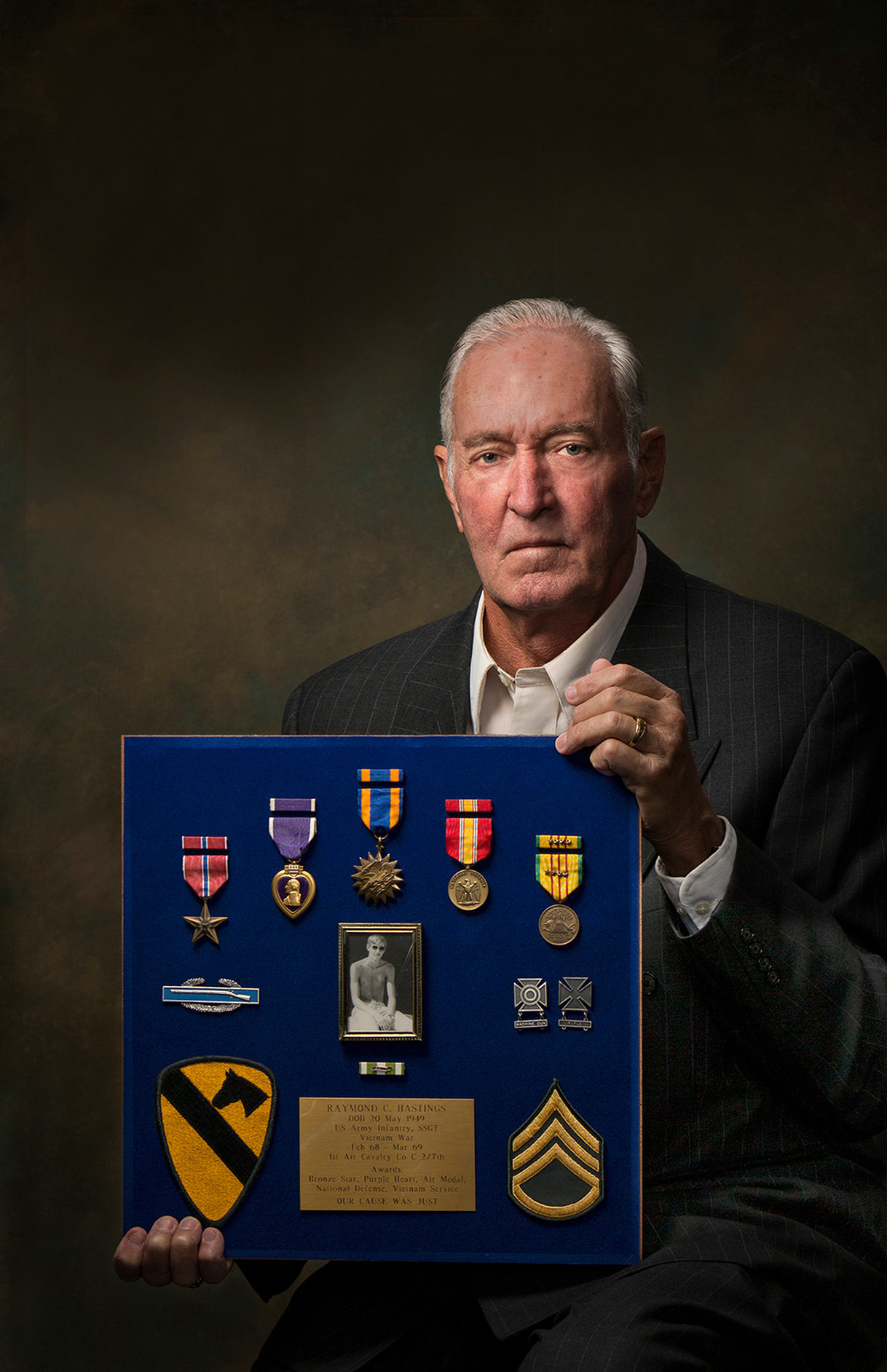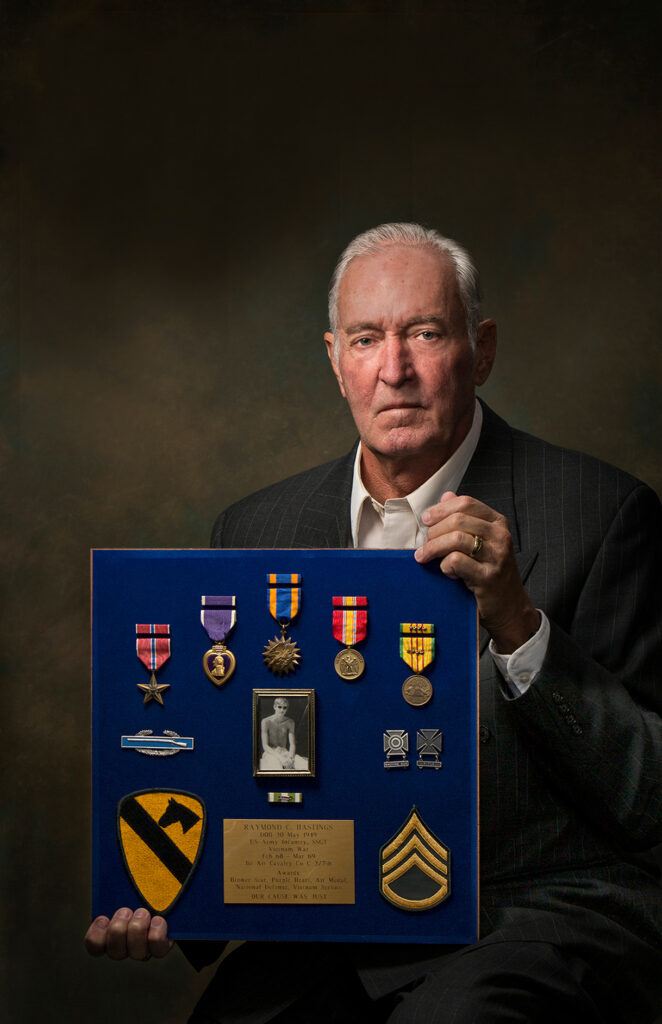
Ray Hastings
Vision of Vets was honored to interview U.S. Army Staff Sergeant Ray Hastings.
Please check back for his video!
Written by Sue Tone
Three weeks into his combat tour in Vietnam, Ray Hastings realized his father was right: enlisting was a mistake. His father, a World War II veteran, knew what was ahead. But the younger Hastings chose to escape an abusive home life; and so, with his high school buddies, he joined the U.S. Army.
“It happened real fast once I was in-country,” Hastings said about the TET Offensive that occurred in 1968 three weeks after his arrival. “We lost 38 helicopters in the first week. Every day, those walking point got ambushed. I wrote letters home saying goodbye.”
He suffered from bouts of malaria, head trauma, exposure to Agent Orange, and back issues that continue today from jumping out of helicopters unaware of how far it was to the ground.
“When we were in the line of fire, we expected to get wounded. We considered it ‘no big deal.’ We were told not to get friendly with the new guys, wait four months,” Hastings said. Yet the bonds he felt with his fellow brothers—some he never would have met from his city life background in San Francisco—were the closest he experienced in his life.
Combat “rocked my world,” he said. “It made me more angry, which is not my personality. I was non-confrontive, pacifistic. It was a conundrum. The anger built up and I looked for ways to vent. I realized I had become my dad, and that scared some of the anger out of me.”
Hastings has received treatment for his PTSD, volunteered at The Vietnam Veterans Memorial in Washington, D.C., visited Vietnam, and founded a speakers bureau in California. His faith and the support of his wife has helped tremendously with healing.
Today, when he meets veterans, he offers a Thank You coin and his card. He tells them, “I’m willing to help and be a friend.”
Vision of Vets is grateful for the opportunity to interview Ray Hastings, which was made possible by a grant from Safeway.

